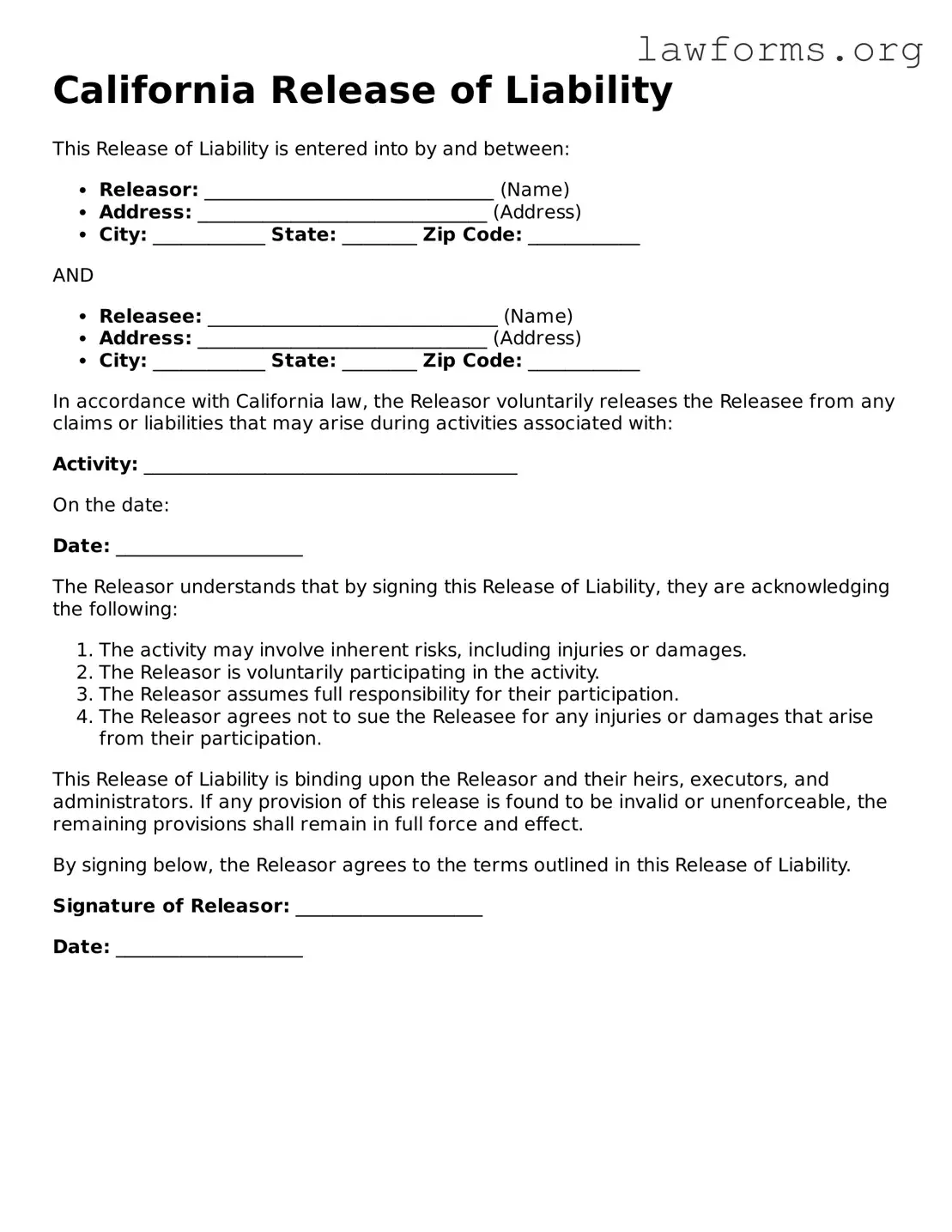California Release of Liability
This Release of Liability is entered into by and between:
- Releasor: _______________________________ (Name)
- Address: _______________________________ (Address)
- City: ____________ State: ________ Zip Code: ____________
AND
- Releasee: _______________________________ (Name)
- Address: _______________________________ (Address)
- City: ____________ State: ________ Zip Code: ____________
In accordance with California law, the Releasor voluntarily releases the Releasee from any claims or liabilities that may arise during activities associated with:
Activity: ________________________________________
On the date:
Date: ____________________
The Releasor understands that by signing this Release of Liability, they are acknowledging the following:
- The activity may involve inherent risks, including injuries or damages.
- The Releasor is voluntarily participating in the activity.
- The Releasor assumes full responsibility for their participation.
- The Releasor agrees not to sue the Releasee for any injuries or damages that arise from their participation.
This Release of Liability is binding upon the Releasor and their heirs, executors, and administrators. If any provision of this release is found to be invalid or unenforceable, the remaining provisions shall remain in full force and effect.
By signing below, the Releasor agrees to the terms outlined in this Release of Liability.
Signature of Releasor: ____________________
Date: ____________________
